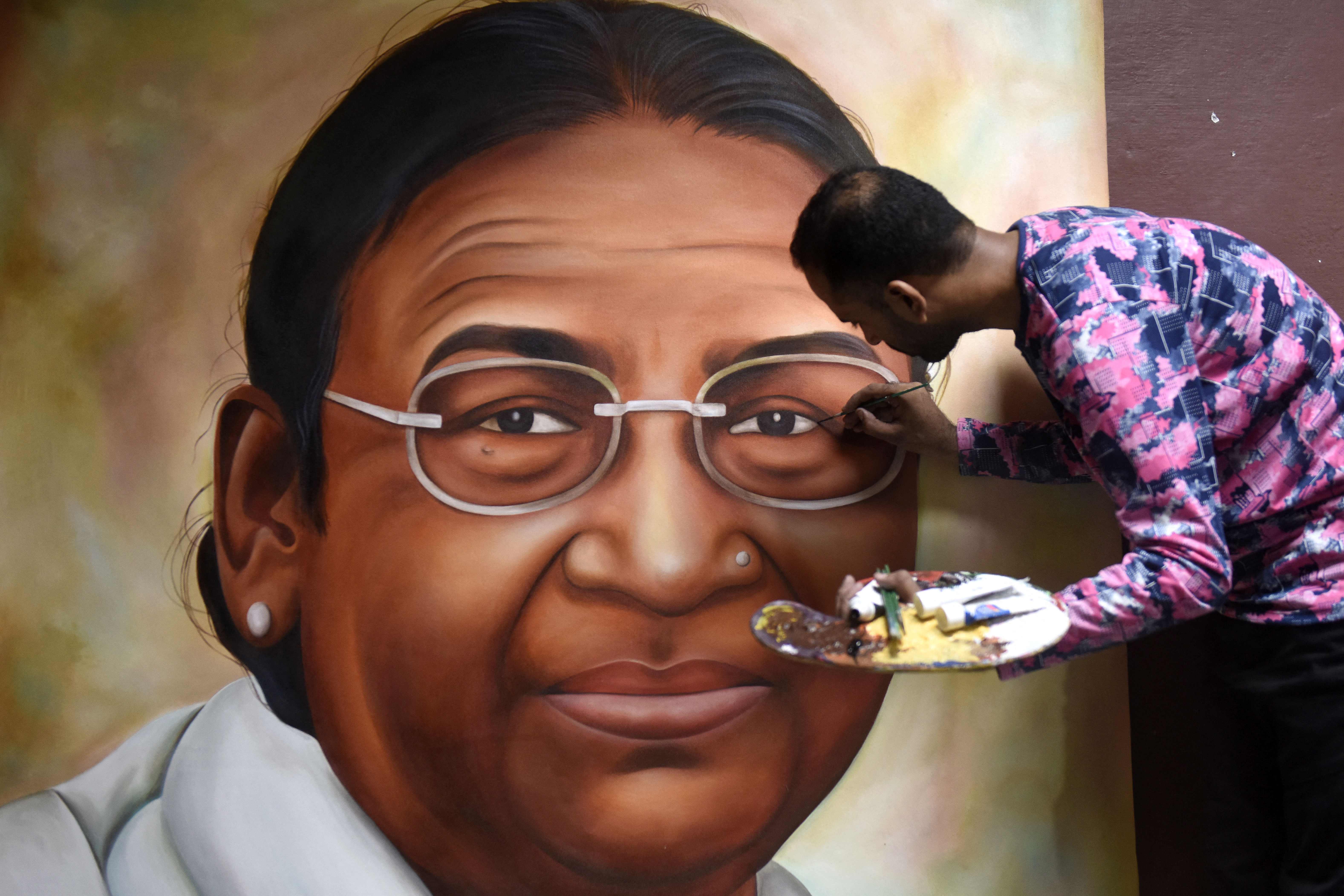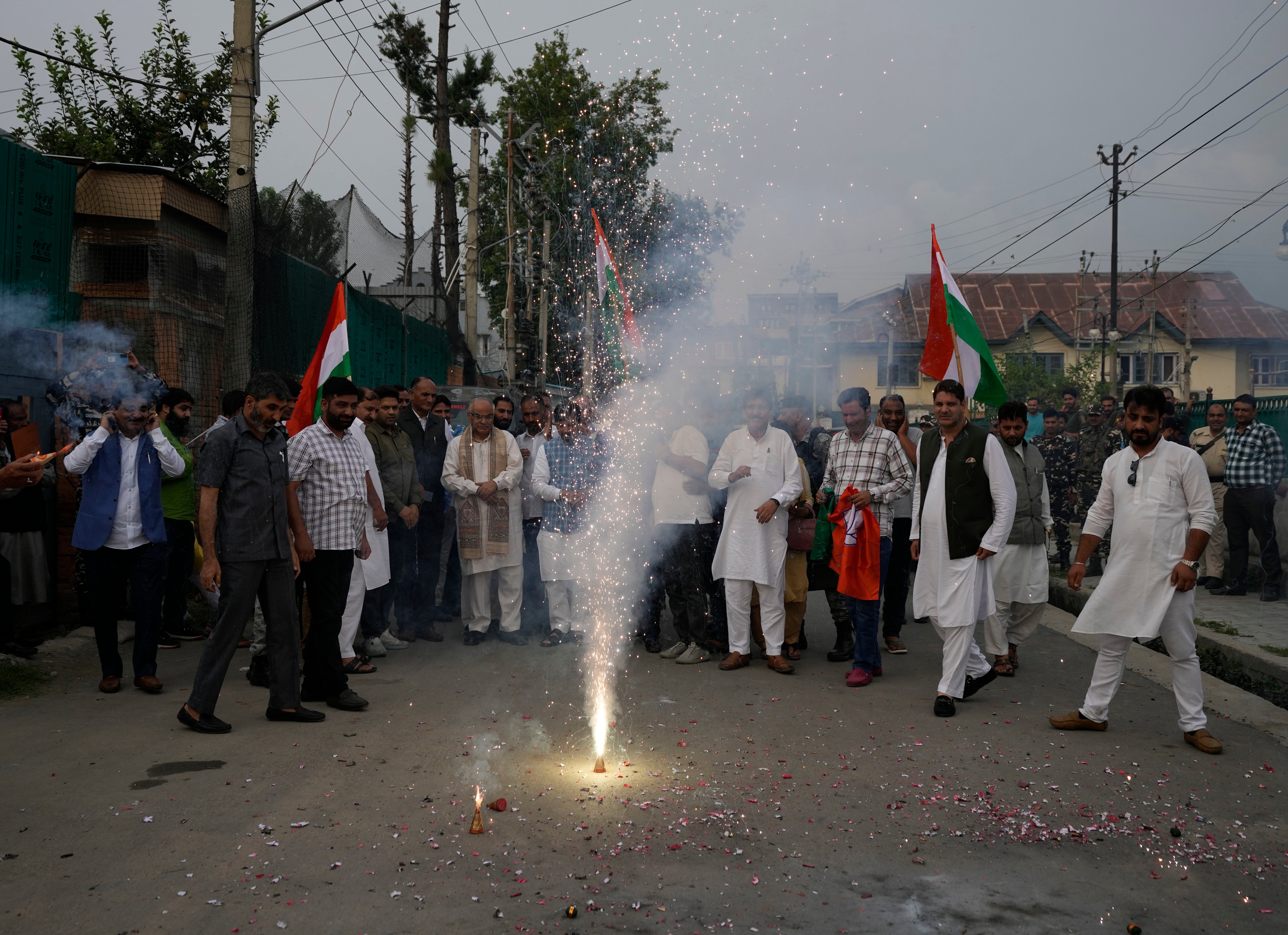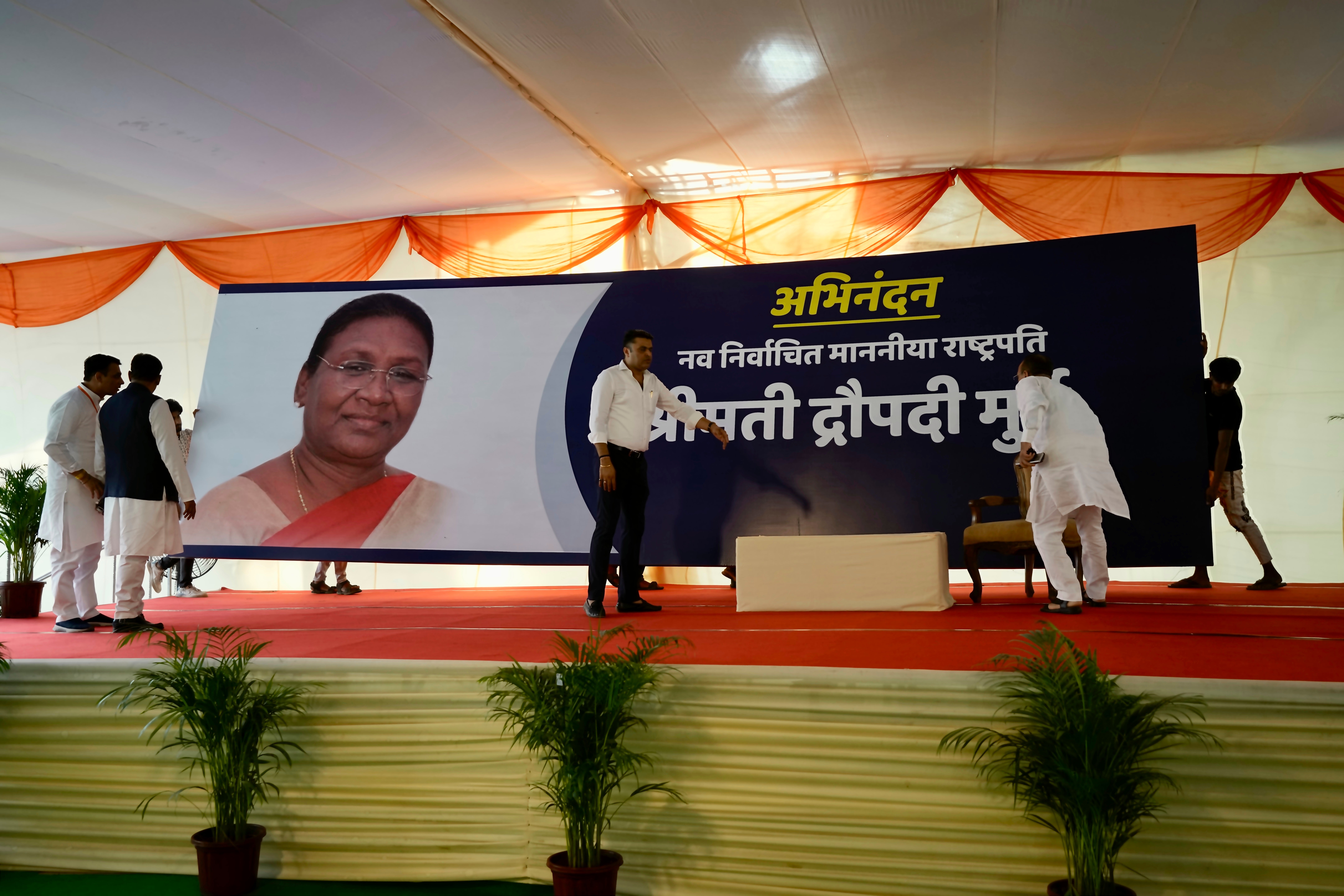Droupadi Murmu becomes India’s first tribal woman president
While her election bodes well for tribal representation, analysts say there will be little impact on the federal government’s ‘anti-indigenous policies’
Your support helps us to tell the story
From reproductive rights to climate change to Big Tech, The Independent is on the ground when the story is developing. Whether it's investigating the financials of Elon Musk's pro-Trump PAC or producing our latest documentary, 'The A Word', which shines a light on the American women fighting for reproductive rights, we know how important it is to parse out the facts from the messaging.
At such a critical moment in US history, we need reporters on the ground. Your donation allows us to keep sending journalists to speak to both sides of the story.
The Independent is trusted by Americans across the entire political spectrum. And unlike many other quality news outlets, we choose not to lock Americans out of our reporting and analysis with paywalls. We believe quality journalism should be available to everyone, paid for by those who can afford it.
Your support makes all the difference.Droupadi Murmu has become the 15th president of India in a historic win that has seen a politician from an indigenous community take the country’s highest elective office for the first time.
Ms Murmu, 64, is leading by a huge margin of 812 votes against 521 votes for the opposition candidate, Yashwant Sinha. A total of 4,796 eligible electors cast their ballots on Monday.
She has secured 68 per cent votes, crossing the 50 per cent mark required to win the presidential elections, while results from 10 states are awaited.
The new president was nominated by the country’s ruling Bharatiya Janata Party (BJP)- led coalition, the National Democratic Alliance (NDA), for the top position in parliament, where the Narendra Modi-led Hindu nationalist party dominates the majority of seats.
The new president will succeed Ram Nath Kovind, whose term comes to an end on 24 July.
Many people in India, mostly from tribal communities, took to the streets to celebrate Ms Murmu’s victory in the presidential election.
People in the newly elected president’s hometown, in the tribal heartland of eastern Odisha state’s Mayurbhanj district, had already begun celebrating in the morning by distributing sweets, beating drums, dancing and singing for her victory. Ms Murmu belongs to one of the largest tribal groups in the country, the Santhals.

Ms Murmu’s nomination by the BJP is being praised even by the ruling party’s critics as her appointment marks the representation of the country’s indigenous people.
India’s tribal population comprises 104 million people, or about 8.6 per cent of the total population, a cohort that has largely remained neglected and generally lacks healthcare and education facilities in remote villages.
Analysts, however, said her induction into the highest elective office in the country will change little for her community.
Nandini Sundar, an author and professor of sociology at Delhi University, told The Independent that while she is happy India has its first tribal president, she believes the nomination is being used by the BJP for “electoral motives”.
“The representation of tribal community has been long overdue. I’m happy that finally we have a president from the indigenous community,” Ms Sundar said. “But I don’t think that, as president, she’ll be able to reverse the policies of this government, which are very anti-indigenous.”

Ms Sundar slammed the government for taking “big steps backwards”, including making changes in the Forest Rights Act that make community consensus no longer necessary before the federal government gives land to private industrialists.
“They [the government] have criminalised large populations on the pretext of anti-Maoist operations. They have really neglected food security, and now India stands at 101 out of 127 in the hunger index. So their policies have been very, very anti-indigenous,” she explained.
Ms Murmu’s role in contentious matters of policy and governance will also be limited, as the post of president in India is largely ceremonial. The prime minister holds executive authority as the head of the federal government.
Mr Modi presented flowers to Ms Murmu on her victory, saying “India scripts history”.
“Smt. Droupadi Murmu Ji’s life, her early struggles, her rich service and her exemplary success motivates each and every Indian. She has emerged as a ray of hope for our citizens, especially the poor, marginalised and the downtrodden,” he said in a tweet.
The president, however, has a significant role in times of political crisis or uncertainty, such as a hung parliament, allowing the office greater power.
Ms Murmu’s rival, the 84-year-old Mr Sinha, is an estranged BJP politician, and was fielded by a divided opposition. Mr Sinha had served as the finance and foreign minister under a BJP government before becoming Mr Modi’s vocal critic and quitting the party.
Who is Droupadi Murmu?
Ms Murmu, a former teacher from Odisha, has previously served as the governor of the Jharkhand state, which also has a significant indigenous population, and represented the BJP’s state wing for “scheduled tribes” or tribal communities recognised as socially and economically disadvantaged by the Constitution of India.
She was born on 20 June 1958 in Baidaposi village of Mayurbhanj district to a father who was a village council chief. Ms Murmu is believed to have become an example for many after her passion for studying led to her becoming the first girl in her village to study in a college.

With no provision for higher studies in her native village, she ended up convincing a local lawmaker to sponsor her education in the state capital, Bhubaneswar.
Journalist and activist Nigamananda Patnaik, who has known her for years, said Ms Murmu was just a girl when she ran up to a visiting lawmaker delivering a speech and waved her school certificate at him, urging him to help her with her studies.
She completed her education at Bhubaneswar’s Ramadevi Women’s College and was employed as a clerk in Odisha’s state government.
She later returned to her hometown in Rairangpur and took up a teaching job. Her political career kicked off in 1997 after she was elected as a councillor in local polls.
She continued in politics before losing her elder son in mysterious circumstances in 2009, followed by the deaths of her second son and husband.
She bounced back to politics in 2015 when she was appointed Jharkhand’s first woman governor, and continued a six-year term until July 2021.

Join our commenting forum
Join thought-provoking conversations, follow other Independent readers and see their replies
Comments